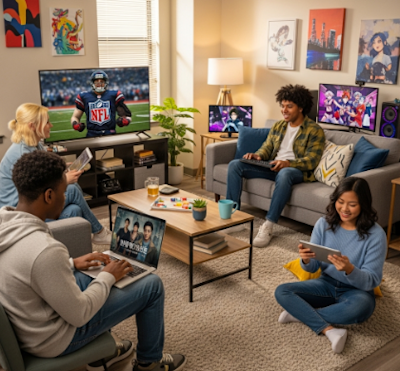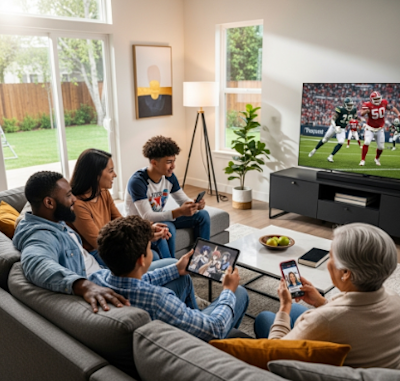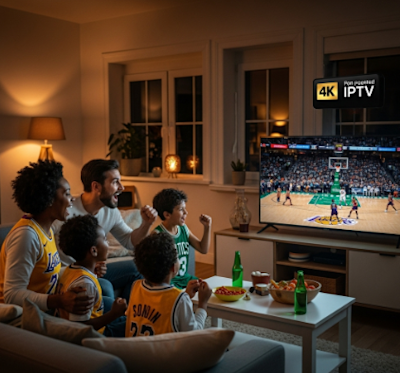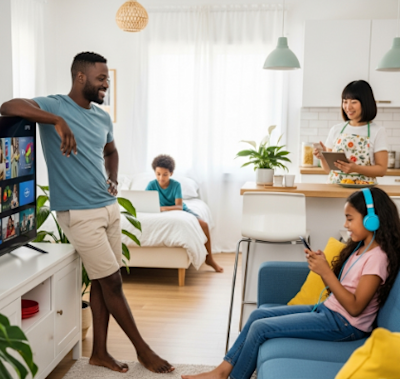In households across America, a quiet shift has been happening in recent years. The family TV night, once a cable-based ritual, is now powered by IPTV — Internet Protocol Television — offering unmatched flexibility, variety, and affordability. In 2025, IPTV is no longer just for tech-savvy individuals or international content hunters. It’s the default choice for American families who want better entertainment at a lower price.
Why is IPTV taking over living rooms nationwide?
For starters, family budgets are tighter than ever, and cutting down on cable bills is a high priority. IPTV subscriptions often cost between $10 to $20 per month — a sharp contrast to the $100+ that cable packages demand. With IPTV, families no longer pay for channels they don’t watch. Instead, they gain access to thousands of channels tailored to every family member’s interests.
Content variety is king. IPTV platforms can include major networks like ABC, NBC, CBS, and FOX, as well as family-friendly options like PBS Kids, Disney Channel, Cartoon Network, Nickelodeon, Animal Planet, Food Network, and Nat Geo. For parents, there’s news, lifestyle, home improvement, and cooking shows. For teens, there’s anime, e-sports, international dramas, and music channels. IPTV meets everyone where they are.
Another huge win is multi-device access. In the average American home, not everyone wants to watch the same thing at the same time. IPTV allows dad to stream the game on the living room TV, mom to follow a cooking show on her tablet, the teen to binge K-dramas on a laptop, and the youngest to enjoy cartoons on a smartphone — all simultaneously.
No more arguing over the remote.
American families also appreciate IPTV's parental control features. Parents can set up profiles, filter age-appropriate content, block specific channels, and set viewing time limits — all from their dashboard. This control brings peace of mind and lets kids explore content safely and independently.
Customization and organization are other big perks. With IPTV, families can favorite channels, set reminders for upcoming shows, record live TV, and build on-demand playlists. Some IPTV providers even let you tag shows by family member, making it easy to jump back into a series or pick up where you left off.
Language and culture accessibility is another key benefit, especially in America’s increasingly diverse households. IPTV services often offer channels in Spanish, Mandarin, Hindi, French, Tagalog, and more — helping families maintain cultural connections while also introducing kids to other languages and traditions.
Educational content is booming too. IPTV brings access to live and archived classes, science shows, history channels, and documentaries — making it a powerful resource for homeschoolers or families who want to supplement traditional learning with screen time that educates as well as entertains.
And what about live events? IPTV includes real-time streaming of everything from awards shows and political debates to holiday specials and concerts. No need to miss the Oscars, the Macy’s Thanksgiving Day Parade, or the latest State of the Union address — IPTV brings it all to your screen with crystal clarity.
Another family favorite: Video-on-Demand (VOD) libraries. Many IPTV subscriptions come with vast libraries of movies and series — from classic comedies to new blockbusters — available anytime. It’s like having Netflix, Hulu, and cable combined in one place, without the need for multiple subscriptions.
Setup is also shockingly simple. Families can get started with IPTV in minutes by installing an app on their smart TV or using a low-cost Android box. No technician, no dish, no long-term contracts — just plug and play.
And let’s not forget the importance of customer support. The best IPTV providers in the US offer 24/7 assistance, simple video guides, and smooth renewal systems, so even less tech-savvy family members can enjoy a seamless experience.
IPTV’s impact on American households is clear: more freedom, more content, better value. As cable continues to lose relevance, IPTV is becoming the standard way families stay entertained, informed, and connected — on their terms.










